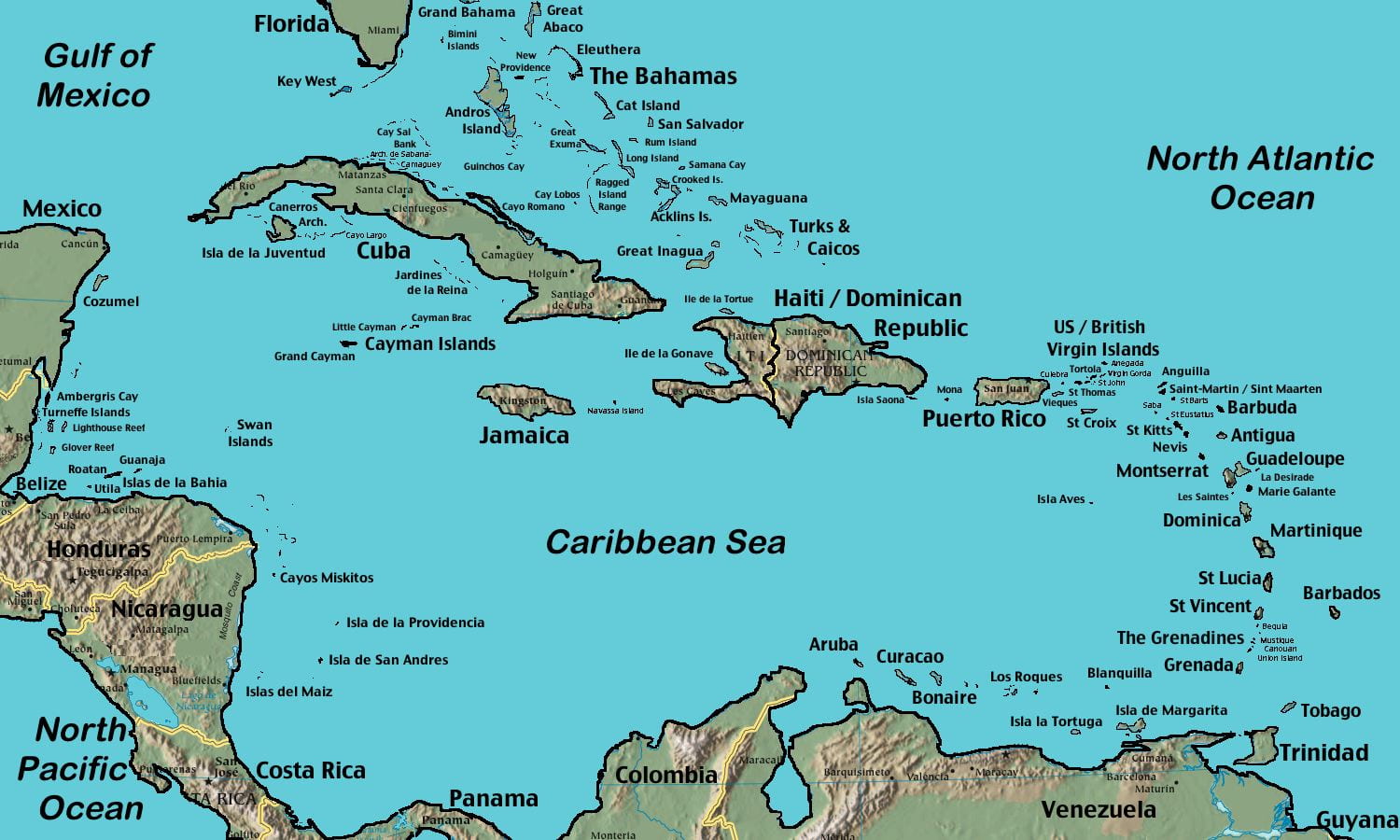Research Sites

The Caribbean. Source: World Factbook, CIA
The Caribbean was named as such by Christian colonial conquistadores and settlers. Its name refers to the name the Spaniards gave to the Kalinago people, Carib. In truth, there were and are hundreds of tribal communities spread throughout the Caribbean at the time of contact. Our ancestors include Kalinago, Lucayo, Ciguayo, Arahuac, Iñeri, Macorixeño, and many, many other peoples. The area itself was developed through movement, trade and economic expansion of Arawak peoples from the south and other Indigenous peoples from the mainland in the north and to the west. Following Christian colonial settlement and the development of the slave trade, peoples of African descent from the Iberian peninsula and from across the African continent were brought to the islands as enslaved laborers. Their first sites of labor included gold mines; then, sugar plantations, and in some cases, cattle farms. The unification of Indigenous and African peoples fomented marronage – or maroon cultures: cultures produced by those who ran away from the plantations to form independent communities in the mountains and thick forests of the Caribbean islands. Marronage took place all over the Caribbean and the Americas, producing new understandings of agriculture, spirituality, food, and relationships.
When we decided to start this project, we had to make choices about where to do our work. This is what is called a multi-sited research project because we’ve interviewed people in Cuba, the Dominican Republic, Puerto Rico and the Pacific Northwest. But there’s an additional dimension to our work: many of the people we interviewed have either been where they are for generations or they are recent migrants.
Abbebe Oshun migrated from Cuba to the Dominican Republic.
Jannes migrated to the PNW from Miami – and her parents migrated to Miami from Cuba.
RaheNi and Myrna are transterritorial and move continuously between Puerto Rico and the mainland.
Tuwaliri returned to the place of her birth after 40 years in the capital city.
Adela, Luis Fidel, Daniela, Chimbi, Ramoncito and Graciela are several generations in their regions in the Dominican Republic, their families having settled either as runaway maroons during slavery in the eighteenth century/early nineteenth century, or having settled in these communities following emancipation and nationalization in 1844.
Rafaelito is part of the well-known Congo community of Villa Mella, a UNESCO World Heritage culture and community that has greatly suffered commodization and other vulnerabilities. In fact, Rafaelito agreed to an interview in the hopes of off-setting some of the damage produced through the designation and the ways in which it impacted his community.
Milady and Amelia are two generations removed from slavery in Cuba, their grandparents having been born into it, and with at least one great grandparent who was born in Africa and sold into slavery in the mid to late 19thcentury.
In the Pacific Northwest, Joe’s Takelma-Siletz ancestors have been here since time immemorial and have survived countless atrocities – including the removal of their people from what today is known as northern California and southern Oregon to the Siletz Reservation on the central Oregon coast.
Gwen’s father came from Alabama in the early 1920s as part of the timber industry. These are just some of the roots of those whose stories are included here.
In most cases, the folks we interviewed also tend to gardens (most, not all) or to specific plants, even if they are not herbalists. Plants sustain our elders’ well-being and their communities. They provide shade, wood for houses, food, and medicine. They also help elders attend to the spirits, to the dead, to the living, and to the ancestors. In some cases, we were lucky enough to be invited into our elders’ gardens or forests. There, they would share with us the various plants that they tend to, and have tended to over decades, and sometimes, generations.
Caribbean Women Healers
UO Libraries| Digital Scholarship Center
This work is In Copyright-Educational Use Permitted.
Contact the Caribbean Healers Project for additional use.